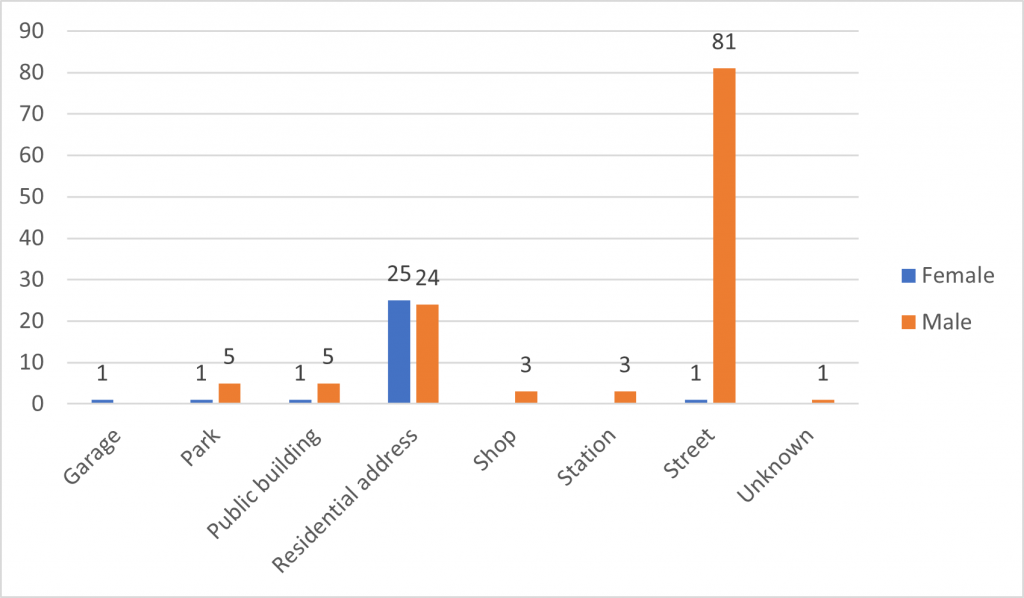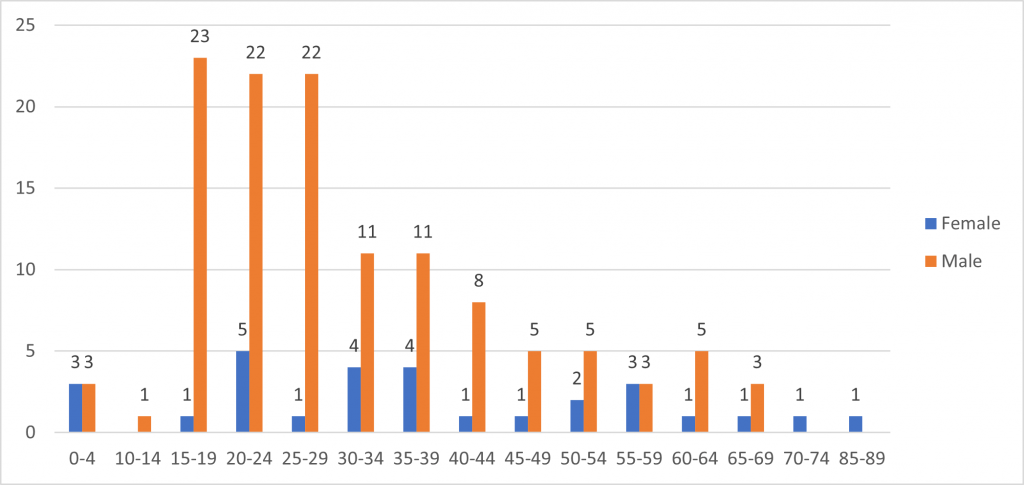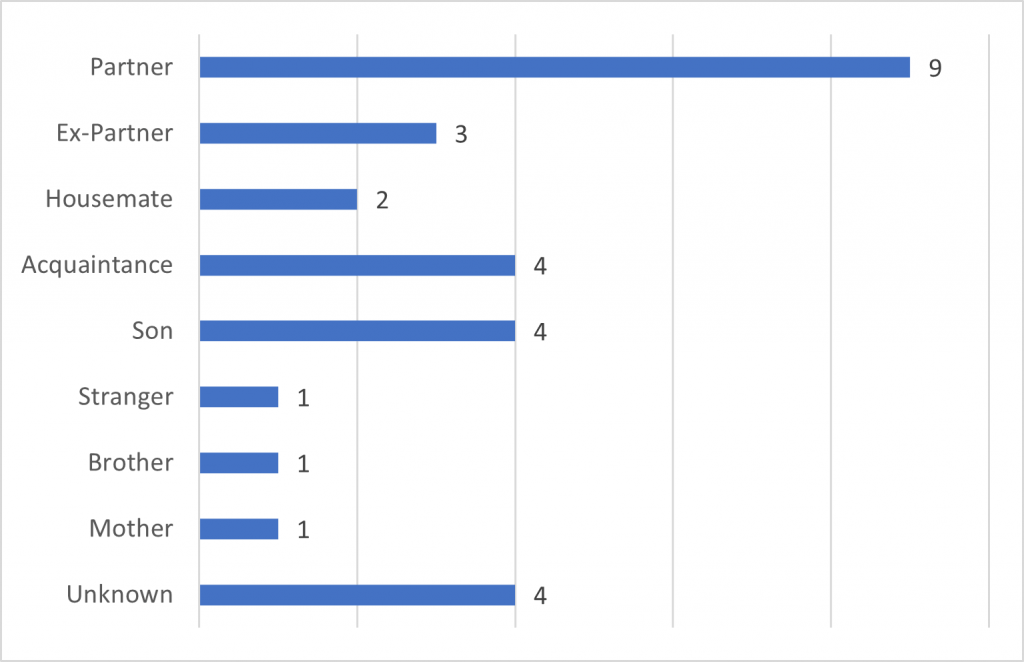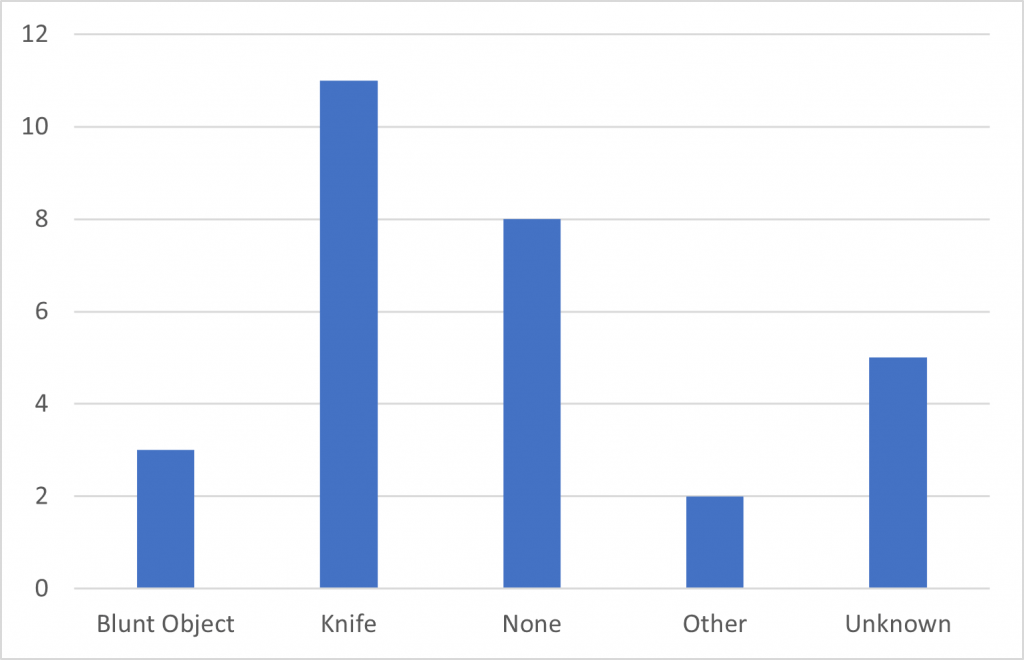The murder of Sarah Everard by a police officer in London has prompted much greater public interest in the issue of ‘femicide’, normally defined as the killing of a woman or girl by a man. Following the court case, the Guardian and Sunday Times newspapers both published a gallery of the 80 or so women vicitms across the UK since March 2021.*
Many of these cases would otherwise have received little or no attention, ironically because they are not felt to be ‘unusual’ or remarkable enough. By contrast, the murder of Sarah Everard became a national issue because of its relatively rare nature: a young woman walking home along a busy street one evening was targeted at random by a stranger who not only worked as a police officer but also used his status to kidnap her from a public place.
In London there have been 18 such alleged ‘femicides’ since the murder of Sarah Everard (plus one alleged killing of a woman by another woman). However it is difficult to examine these cases in detail because they have not yet gone through the justice system. So, in an attempt to look more closely at the nature of fatal violence against women and girls, we decided to focus on the 29 female victims of homicide in London in the calendar year of 2019.
Female victims accounted for 19.2% of the total that year (29 out of 151), according to our statistics*. The figures can vary quite a lot each year as they are relatively low numbers (see table below), but the proportion of female victims tends to be between 20 and 25 per cent of the total. In 2020 there were 28 female victims out of a total of 123 (22.6%).
| Year | Female Victims # | Female Victims % | Total Homicides |
| 2016 | 19 | 17.4 | 109 |
| 2017 | 26 | 19.6 | 133 |
| 2018 | 31 | 23.1 | 134 |
| 2019 | 29 | 19.2 | 151* |
| 2020 | 28 | 22.6 | 123 |
Looking at the cases in 2019, we can try and distinguish between them based on a number of features such as age, weapon, location (of the attack), and relationship with the killer or suspect.
Here’s a graph comparing male and female homicide victims by location of attack.

It’s clear that most (86 per cent) female victims in 2019 were killed at a residential address – either their own home or someone else’s. It’s striking that the only female street homicide involved a fight between two women which ended in a fatal stabbing. By contrast male homicides mostly (66.4%) take place in the street.
One reason for this disparity is that a large proportion of male homicides involve fights between young males (between the ages of 15 and 30) in public places, whereas the ages of female victims are not as concentrated in this range.

This difference is mostly due to the closer relationship between female victims and their killer and, as we have already seen, the fact that most female victims are attacked indoors.
In 2019 the vast majority of killers/suspects in female homicides were male. This is generally the case every year, as well as in the UK as a whole. If we exclude the four cases where a relationship is not known (two are unsolved murders and two are ongoing investigations into baby deaths), then 23 out of the 25 victims (92%) were killed by men. The two female suspects were a mother who killed her child and a woman who killed a ‘rival’ after an argument in the street.

Of the 25 confirmed ‘femicides’ (female victims killed by men), 12 out of 25 (48%) victims were killed by a partner or ex-partner and 5 (20%) were killed by a relative.
To end, here’s the chart of female victims by weapon used. While knives are still the most common weapon used (38%), the percentage is much less than for male victims (68%), and ‘None’ – which mainly involves the use of hands and feet (including manual strangulation – is much higher (28% compared to 12%).

If you have any questions then please comment below and we will try to answer them, either in the comments or with an addition to this post.